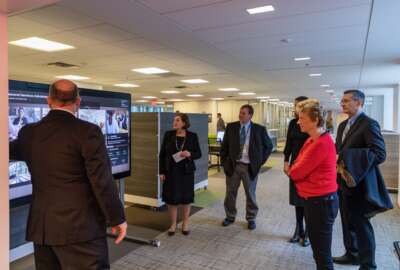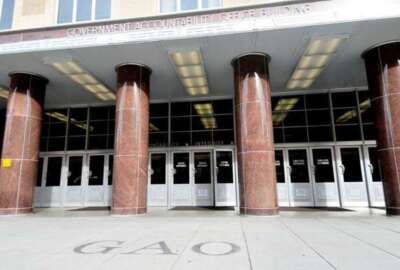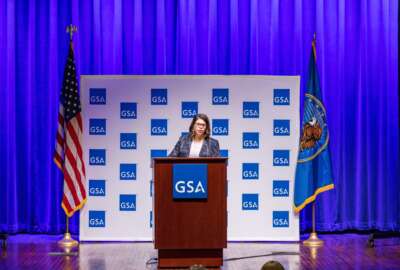As you return to the office, the office space must evolve
Chuck Hardy, the chief architect at GSA, said the agency has learned a great deal about the future of office space from the feedback of 1,800 registered users.
Very few topics raise the temperature of federal employees as much as changes to their office space.
The loud talker next to you.
The person’s whose daily tuna sandwich smell permeates the office.
The traffic, the cost of gas or the metro, and the overall hassle of having to make your way into the office after many people realized the benefits and enjoyment of telework.
Yes, there are many tens of thousands of federal employees who have been going to the office every day for the past almost four years, but even they can be exasperated by others coming back to their once quiet sanctuary.
Add to that, the Biden administration’s push for federal employees to return to the office, emotions ratchet up further when it comes to where you sit and work every day.
We can debate the value, the necessity and even the stupidity of forcing employees, public or private sector, back to the office for a specific period of time during their work week.
Office space must be agile, flexible
But what we all can agree on is that change is inevitable for your office space. The technology, the furniture and the overall configurations are part of the constant upheaval we all experience in our lives.
“One trend that we’re seeing, and I think is going to remain, is that the work and workspaces need to remain agile and flexible to address the current environment we’re in. And we need to manage that ever-changing environment,” said Chuck Hardy, the chief architect at the General Services Administration, in an interview with Federal News Network. “This makes managing the surge vitally important and properly planning spaces. I think agencies are learning that, but more directly, it’s sending that message that you don’t build space for your busiest time of the year. Instead, you build it for the mean and have solutions in place like federal co-working, like commercial co-working or like telework that effectively and efficiently absorb those surges.”
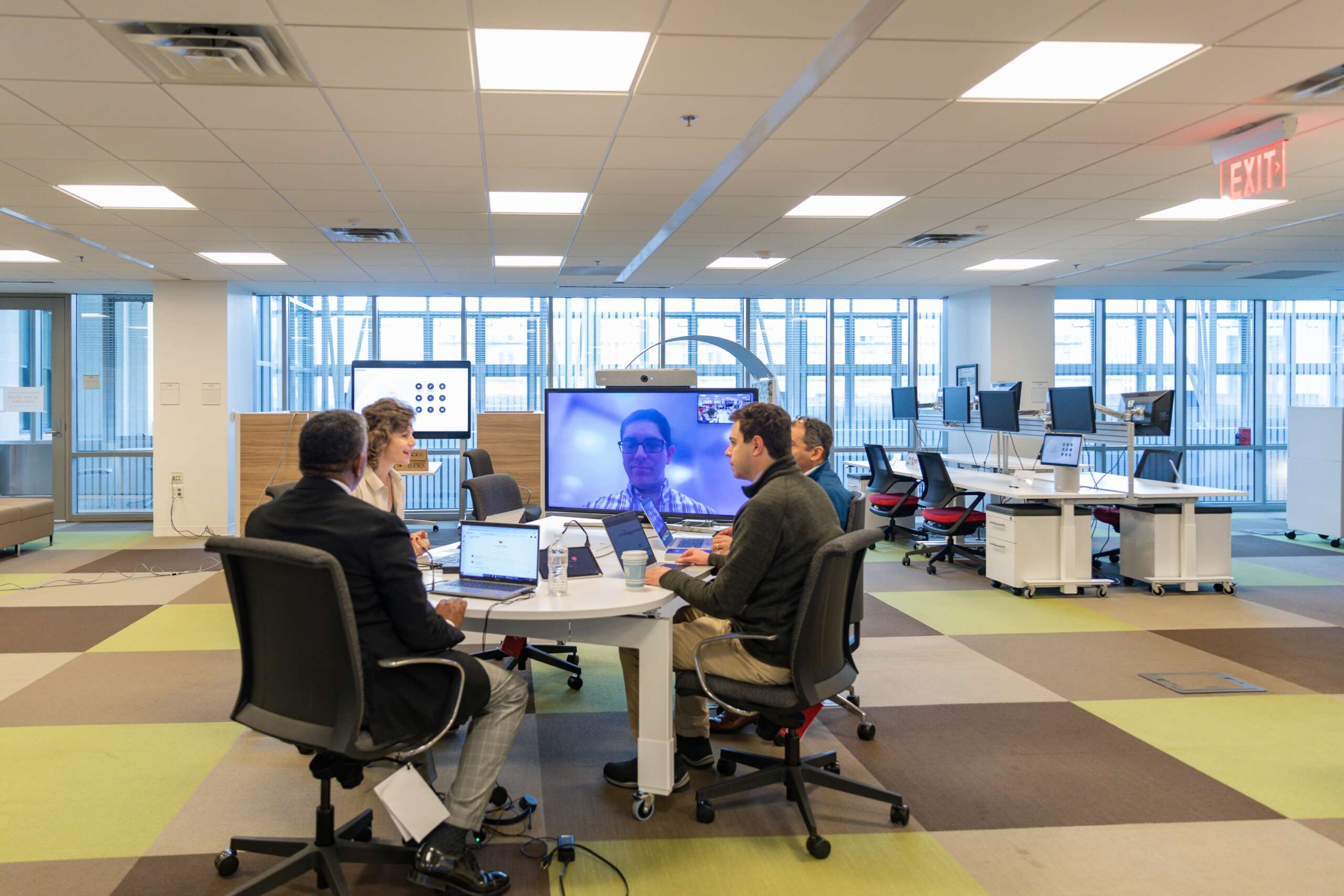
Flexibility to have seamless meetings where some people are in person and others are on video. The agility to work in a group of three or four for a short period, but then go heads down by yourself for a few hours.
Agencies need to make their employees’ office experience more than a desk, a chair and a computer.
Hardy said the lessons learned from the first year of GSA’s Workplace Innovation Lab is demonstrating more than what is possible, but what really works.
“I think a trend that’s going to last as well is proper acoustical design. With the increase in hybrid meetings going on in the office and alongside the individual solo work, well designed acoustics is essential,” he said. “Not only from the furniture side, where you’re seeing a lot more soft surfaces, the technology that provides noise dampening, technology that makes conversations more audible are among those solutions agencies are seeing that probably weren’t in place two years ago or three years ago, and are now solving some of the concerns people may have about office environment.”
GSA lab aims for seamless experience
When GSA launched the test site in January 2023, former Public Building Service Commissioner Nina Albert said it was “for people to return to office and to re-experience the benefits of shared culture, idea exchange and camaraderie. What you’re going to see are innovations in furniture solutions, innovations in conferencing, how really can we experience hybrid in a way that feels seamless and effortless as opposed to a burden.”
In the year since Albert, who left her role last October, outlined those goals, Hardy said GSA’s Workplace Innovation Lab (WIL) has received positive feedback from its users.
Hardy said the lab has conducted over 300 tours with over 7,000 federal employees, which came from over 100 different agencies or bureaus. There are about 1,800 registered users on the lab’s website, which are the employees who can book reservations for desks or meeting rooms. He said in the first year, the lab has received 4,200 individual desk and over 3,900 meeting room reservations.
“We’re getting feedback and input from these folks and 90% of the top 10 rooms reserved for people suggesting that the will was a valuable resource for federal agency teams to collaborate. I’m happy to say the feedback about the WIL has been overwhelmingly positive customer experience rating of the will is 4.3 out of 5,” Hardy said. “With many folks providing us good feedback along the way, we’re also seeing 85% of the users really want to see the WIL keep going. We’re going to do that. Overall, some agencies use a space for offsite meetings. Some use it for helping drive change in their organizations to get people to broaden their perspectives, and others to experience what offerings are out there to help meet their missions.”
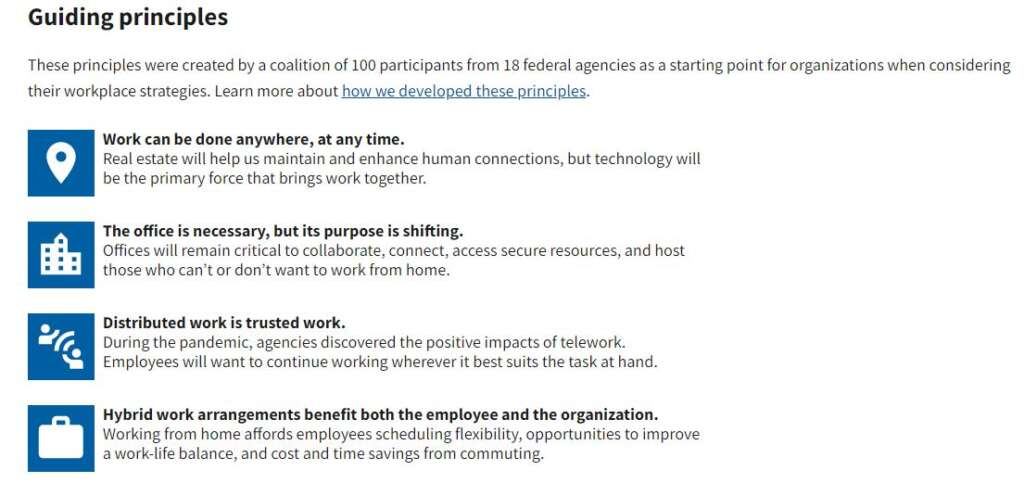
The feedback from those 1,800 registered users — GSA doesn’t charge agencies to use the WIL, but does ask for them to complete a survey in return — has turned into lessons learned and improvements.
Hardy said, for example, GSA and its partner vendors have made improvements around the acoustics of the office spaces.
“From the start, we had, for lack of a better way to characterize them, some phone booths that were sound-controlled rooms that you could go into. There were one-person booths and there were four-person booths. We have been letting agencies know about, and having the conversations with agencies about, the cost effectiveness of providing a furniture solution for a sound-controlled environment that can be moved and can be plugged into the wall. But if you don’t need this location, you can pick it up and move it someplace else,” he said. “These things can start to solve some of these mixed scenarios that will go on in the office where the person next to you is on a webinar or a call where he or she is talking out loud, or you have a loud talker that’s just on the phone with somebody, a solution like that where they can step away from their desk area, walk into that booth, have that half hour call, and then walk back to the desk and conduct business. It’s both cost effective and efficient for the business lines that we’re dealing with.”
Lab to expand office space test
Hardy added several vendors swapped out technology or furniture based on user feedback as well such as the ability to have multiple virtual meeting technologies that are used across government on the startup screens, making meetings, really just one click away.
“We had some folks asked about the accessibility of those since the start of the world today. Those manufacturers are already addressing the accessibility issues in those in those booths,” he said. “So it’s good to see that we’re not only signaling changes that need to be made in their offerings, but the furniture vendors in the industry is actually responding with solutions.”
As GSA continues its Workplace 2030 test bed, Hardy said his team will focus on a few changes based on agency feedback. The customer surveys become more important as GSA sees an opportunity to reduce the government’s real-estate footprint by up to 30% in the coming years as about half of GSA’s leases are set to expire within the next five years.
Hardy said one big change is the lab is expanding to the top floor of GSA headquarters in Washington.
“We’re keeping one of the three areas that we’ve had on the second floor fully operational. We do that because we wanted to make sure that we were still continuing to serve the federal population in in DC while we’re going through some of these changes,” he said. “On the seventh floor we are going to broaden the scope of the workplace research we’re doing in addition to a strong partnership with technology and the furniture industry. It’s also going to demonstrate some low-cost changes to workplaces that could reap benefits for our end users. For example, how can we take workplace change and achieve it reusing some of the existing furniture we already have?”
With budgets expected to be limited to non-existent for agencies to buy new furniture, Hardy said the idea of the seventh floor lab is to show agencies what they can do to rearrange or reconfigure the furniture to be more agile and flexible.
“As we continue to go forward, it will continue to be this advanced research program for GSA around furniture, technology and workplace that will constantly feed us information from our clients’ needs and our end users’ needs. And what we should be leaning forward into developing as product lines for us,” Hardy said. “What’s nice about the seventh floor is there is an open space on the outside that goes out to an area that does have WiFi and so we now have a location that people can have meetings inside of space and outside on a rooftop. That shows the effective and efficient use of space, sometimes gets forgotten and used only during lunch and on breaks. But this is something that you could actually go out there and have meetings and do things. So there is a lot of opportunity up there on our top floor.”
GSA’s Workplace Innovation Lab will not solve many all the problems, concerns or even grumpiness of the return-to-office mandate. But it does have the potential to make office space more comfortable, meet employees’ needs more easily, and maybe most importantly, make the overall experience less painful for those dreading coming back to the office.
Copyright © 2024 Federal News Network. All rights reserved. This website is not intended for users located within the European Economic Area.
Jason Miller is executive editor of Federal News Network and directs news coverage on the people, policy and programs of the federal government.
Follow @jmillerWFED




